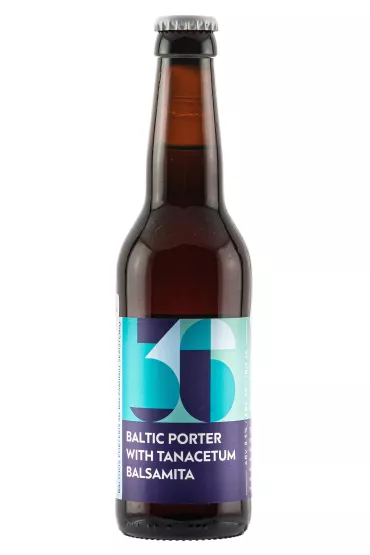
baltic porter with tanacetum balsamita
Notify me
Enter your email address here to be informed once as soon as the article is available again.
Tanacetum Balsamita is also called lady’s mint or Marienblatt in German. The yellow-flowering plant originally grew in the high mountains of the Caucasus, but is now also widespread in Europe. Hundreds of years ago, the pennyroyal was already used as a medicinal plant to relieve cramps and relieve stomach problems. Regardless of its medicinal use, Tanacetum Balsamita is valued for its minty scent and flavor and is also cultivated as an ornamental plant.
In the Sakiškių alus house, however, the lady’s mint is not a decorative accessory, but the protagonist in an unusual Baltic Porter. The brewers take advantage of the fine aroma of the plant and refine their beer with it.
Sakiškių alus Baltic Porter with Tanacetum Balsamita flows into the glass in a delicate cloudy amber-gold and shimmers copper-red when the light hits it. A symphony of roasted malt, the scent of coffee, caramel and brown sugar rises from the ivory-colored head of foam. A hint of mint arouses curiosity about the first drink. The flavor profile mirrors the olfactory first impression one-to-one and flatters the tongue with toasted grain, mocha, toffee and earthy wood notes. The mint hovers over the action and gives the porter a mystical quality. The pointed bitterness completes the picture and completes the beer enjoyment dry and with herbal accompaniment.
- Content
-
0,33 Liter Bottle
- Brauerei
-
 Sakiskiu Alus
Sakiskiu Alus
- Bierothek® ID
- 57001054
- EAN
- 4779038321628
- Weight
- 0.33kg(0.67kg with packaging)
- Deposit
- € 0.08
- LMIV
- Responsible food business operator (EU)
Sakiškių alus, Beržo 4-oji g. 9,
Sakiškės Litauen(LT)
- Beer region
- Baltikum
- Beer style
- Porter & Stouts
- Food recommendation
- Starter: Fresh salad with nuts, pesto, gorgonzola and chilli
Main course: Roast with goat cheese and fried potatoes
Dessert: Chocolate desserts - Alcohol content
- 8.5 % vol
- Bitter unity
- 26 IBU
- Original wort
- 20 ° Plato
- Ingrediants
Water, barley malt, lady mint, hops, yeast








